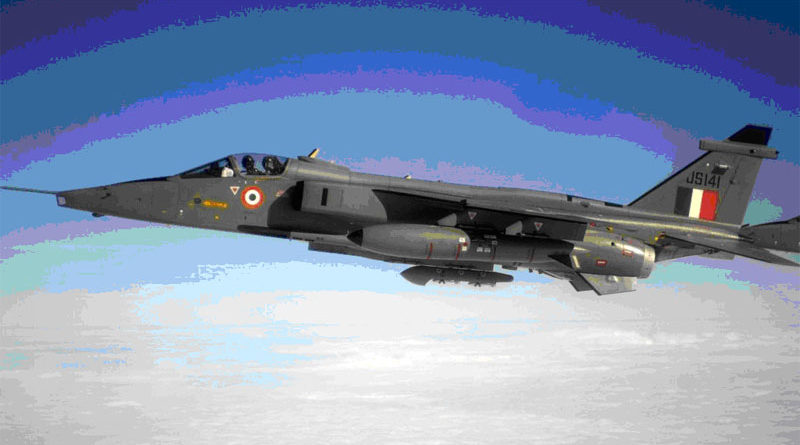India Planning Swarm Drone System: Source
December 3, 2020
An Indian Air Force SEPECAT Jaguar GR-1 Shamser ground attack aircraft, July 30, 2004. Image: US Air Force/SSGT Mathew Hannen
India is reportedly planning to develop an air-launched swarm drone system to overwhelm Chinese air defenses, giving their fighter jets an edge in any potential conflict.
Indian defense planners reportedly feel the necessity for such a system as thousands of Indian soldiers are currently locked in a border standoff with China in the northern Ladakh region of the Himalayas.
Although the probability of full-blown conflict has decreased significantly since June when 20 Indian and an unspecified number of Chinese soldiers were killed, the possibility of a flareup leading to full-on conflict cannot be ruled out.
Jaguar Fighter Jet to Carry 24 Combat Drones
India’s latest plan envisages the use of a swarm of combat drones to overwhelm Chinese air defense units in the event that battle erupts.
India’s Jaguar fighter has been earmarked to carry 24 combat drones to take down individual targets, The Economic Times reported, citing defense sources.
Under the project, the aircraft will be modified to carry four pods, with each pod able to carry six drones, the outlet said. The aircraft crew will be able to release the drones towards the target while staying out of range.
Four-Year Project
The development process of the project is expected to take four years.
State-owned aerospace and defense manufacturing company Hindustan Aeronautics Ltd. is partnering with two start-ups to work on the project, according to The Economic Times.
Additionally, India is developing a Very High Altitude Long Endurance unmanned aircraft for surveillance and reconnaissance purposes, the daily reported.
The vehicle is being designed to fly 70,000 feet for a period of days, providing real-time feedback to controllers while remaining beyond the range of most air defense systems.
PLAAF vs. IAF
China’s People’s Liberation Army Air Force (PLAAF) has nearly twice as many aircraft and personnel as the Indian Air Force (IAF).
However, in the Ladakh region, China’s air force is perceived to be at a disadvantage, as the higher altitude and greater distance from Chinese airbases in Tibet and Xinjiang mean PLAAF aircraft may have to fly with half of their payload and fuel capacity in the event of war. The IAF, on the other hand, has access to bases near the Line of Actual Control (LAC), the de facto border between the two nations.
To nullify the Indian edge, the PLAAF has started building airbases along the LAC, a September report from American research group Stratfor said.
Courtesy: Opera News/ The Defense Post

